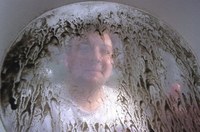The National Oceanic and Atmospheric Administration is ponying up $1.4 million to help West Coast shellfish growers and scientists address ocean acidification.
The new three-year grant will help commercial shellfish growers find ways to adapt their oyster and mussel-rearing businesses to keep the animals from dying when waves of carbon dioxide-saturated water come through.
High levels of carbon dioxide throw the water’s chemistry out of balance, making it difficult for bivalves to form their shells. The phenomenon has contributed to massive shellfish die-offs throughout the Northwest.
Burke Hales, an Oregon State University professor who developed a machine that detects chemical changes in the water, will be the leading expert on the project.
Shellfish growers will learn how to monitor ocean acidification levels, and will collaborate with Hales and other scientists along the West Coast to develop more affordable, accurate sensors that measure changes in ocean’s chemistry.
The grant announcement is the latest development in NOAA’s ongoing effort to combat carbon dioxide’s damaging effects on ocean life. Earlier this fall, the agency announced the launch of a new web-based tool that tracks ocean acidification along the West Coast.
The announcement follows Oregon State University researchers’ discovery this fall that ocean acidification isn’t caused by carbon dioxide alone, but the imbalance created when carbon dioxide rises without a concurrent rise in seawater calcium carbonate levels.
